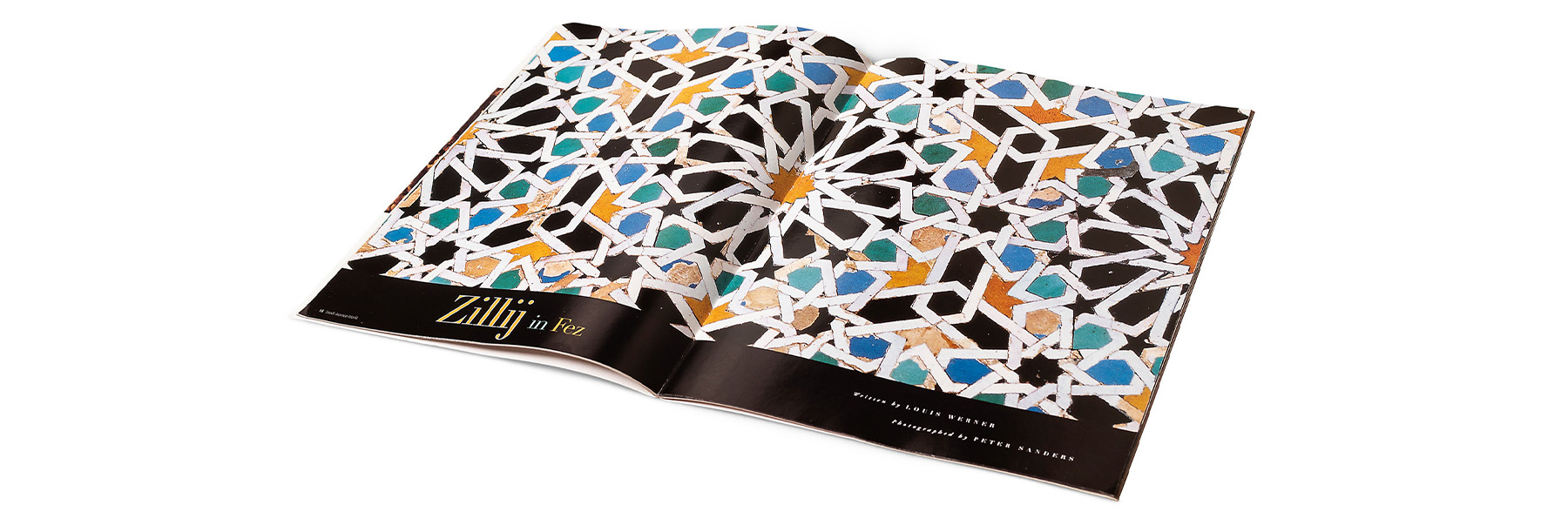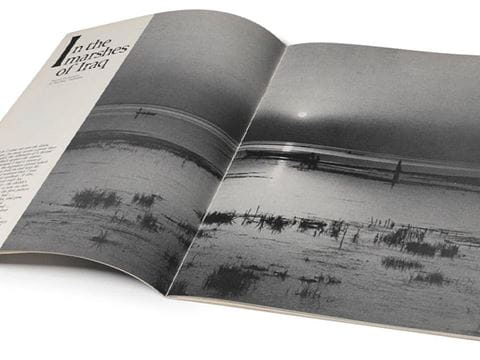
Spotlight on Photography: Explore Moroccan Zellige (Zillij) Tilework in Fez With Peter Sanders
In patterns and refractions, the old city of Fez, Morocco, comes to life through the geometric tile works known as zillij. In 2001, AramcoWorld commissioned photographer Peter Sanders to tell the story of a family who for five generations has added new dimensions to art and architecture.
In patterns and refractions, the old city of Fez, Morocco, comes to life through the geometric tile works known as zillij. In 2001, AramcoWorld commissioned photographer Peter Sanders to tell the story of a family who for five generations has added new dimensions to art and architecture in the story "Zillij in Fez."
“I have always been fascinated by the widespread use of Morocco’s mosaic patterns of eight- to 24-point stars decorating otherwise blank walls, floors and fountains. So, when an opportunity arose to spend time with craftsmen of these running bands of zillij, I happily jumped at the opportunity,” Sanders said.
Sanders recalled how each piece of tile was individually chiseled by hand. Thousands of pieces were placed face down on the ground based on memory of geometric design, assembling a large panel of complex patterns of interspacing shapes and colors that could often extend 3 meters (10 feet) or more. Coated in plaster and dried, the panel would be gingerly lifted revealing the work of art.
“This experience deepened my appreciation for Morocco’s rich cultural heritage and timeless beauty of zillij art and craftsmen.”
—Peter Sanders
You may also be interested in...

Spotlight on Photography: Discover the Marshes of Iraq in a Visual Story by Wilfred Thesiger
Arts
History
“In the Marshes of Iraq” — November/December 1966
AramcoWorld: 75 Years of Visual Storytelling Through Photography
Arts
History
Part 2 of our series celebrating AramcoWorld’s 75th anniversary this year highlights “visual vagabonding”—the magazine’s expanded use of vibrant images over the decades to fulfill the mission of cultural connection.
FirstLook: Poetic Fusion
Arts
Prior to our modern practice of image manipulation with editing software, photographers worked more with planned intention and craft.